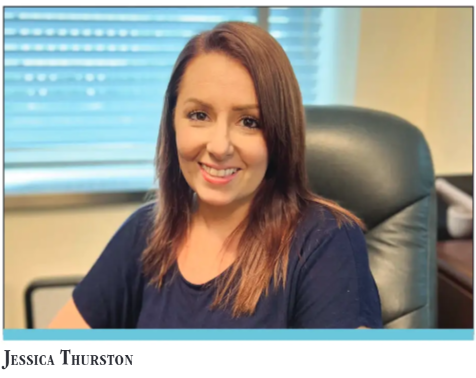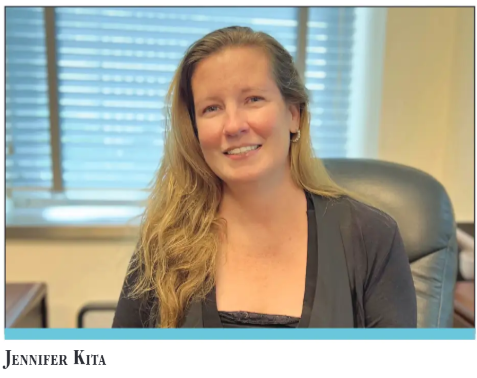
The IRETA Clinical Quality Improvement (CQI) Team have been hard at work in the past year, making substantial contributions to the field of addiction treatment. The goal of the CQI Team is to focus on assessing and enhancing the quality of clinical services for addiction treatment programs at all levels of care.
Throughout the consultation project, the CQI team will help a program ensure compliance with regulations, analyze patient data, improve clinical processes, provide staff training, prioritize patient safety, monitor outcomes, and gather patient feedback to continuously improve the quality of care provide. Their efforts aim to deliver effective and safe addiction treatment while adhering to industry standards and best practices.
The following interview takes and in-depth look at the CQI’s team work throughout the past fiscal year.
The IRETA Clinical Quality Improvement Team:
- Christie Nebel, MBA, LPC – Director of Clinical Quality Improvement
- Jennifer Kita MS, LPC – Clinical Quality Improvement Associate
- Jessica Thurston, LPC – Clinical Quality Improvement Associate



Could you provide an overview of the work that the CQI Team has been involved in over the past year?
Christie Nebel: Over the past year, our team has been actively engaged in several key projects. We started by crafting Program Policy and Procedures (3.7) for Gateway Rehabilitation’s ASAM Certification. We also conducted Motivational Interviewing (MI) Trainings with Level 1 Treatment Centers, Level 3.5 Centers, and conducted group and individual observations, including intake observations. Initially, we worked with three OTPs (Opioid Treatment Programs), but now we’re primarily focused on one. We have also provided ASAM Alignment Policy reviews for treatment programs, offering detailed feedback on their progress and recommendations. Additionally, we’ve been closely involved in improving aspects of clinical procedures, sitting in on clinical staff meetings and providing feedback and recommendations from those observations.
Jennifer Kita: Our consultation projects have spanned across Pennsylvania. Right now, we are mostly in western PA, but we have had a number of projects in the eastern part of the state. One of those is active right now. Our role involves direct observation of group sessions, assessing individual sessions, and offering recommendations and support as needed.
Jessica Thurston: The length of our consultations varies, depending on the specific needs of each project. Some projects last several years, while others are shorter in duration, depending on the nature of the work.
What does the general process of working with clients on a consultation project look like?
CN: Our contracts with clients typically involve reviewing policies and procedures and aligning them with the ASAM Criteria (American Society of Addiction Medicine). We also assist in developing and implementing clinical practice that encompasses everything from direct services to treatment planning to documentation.
JK: When we begin working with a client, we go onsite to get a feel for the environment. We sit in on groups, observe supervisors, and gather initial information. Building rapport with the staff is crucial at this stage.
JT: Each site is unique, so we adapt our approach to match the clinicians’ skill sets and the system they are operating in. It’s about understanding how to assist them effectively within their context and developing an individualized plan.
How does the ASAM Criteria factor into the work you do?
CN: The ASAM Criteria plays a central role in our work. It’s not just about determining the level of care placement; it’s a comprehensive tool for developing programs and guiding clinical assessments. ASAM helps clinicians standardize treatment approaches and ensures a more individualized approach to care.
JK: The ASAM Criteria consists of guiding principles, criteria for placements, and defining characteristics. We emphasize the dimensions and characteristics to help clinicians better understand clients’ needs and create appropriate treatment plans.
What metrics or methods do you use to measure success in your client work? How do you evaluate long-term success when you are no longer directly involved?
CN: Measuring success can be complex. Currently, we use ASAM certification checklists and observe Motivational Interviewing and DBT (Dialectical Behavior Therapy) skills. We provide feedback during observations and track individual clinician improvements. However, we haven’t established a systematic approach to measure success for providers as a whole. Each site has its strengths and weaknesses, making it challenging to establish a one-size-fits-all metric.
For the 3.5 Level of Care, stakeholders measures are a passing score on the ASAM alignment review, and improvement on value-based purchasing performance indicators: decrease in 90 day readmits into same or more intense level of care and engagement in transitioning level of care within 30 days of discharge. IRETA’s measure is meeting the rating elements for ASAM certification for 3.5 level of care.
What are some of the biggest challenges you encounter during a consultation project?
JK: One of our main challenges is getting buy-in from all levels of the organization, from top management to front-line staff. Staff turnover and communication issues can also be obstacles. The challenge of focusing on standards and regulations over individualized care is common in this field.
JT: All these challenges often come down to achieving buy-in throughout the entire system, which can be a significant hurdle.
What do you find to be the most rewarding aspect of these projects?
JS: For me, it’s seeing clinicians improve their skills and witnessing their growth throughout our engagement. We become mentors and supervisors, helping them provide better care than they could before.
JK: One of the most rewarding aspects is witnessing the shift in therapeutic relationships. When treatment becomes more about helping individuals than imposing consequences, it’s a sign that our efforts are making a difference.
The work of IRETA’s CQI Team is instrumental in enhancing addiction treatment by aligning policies, procedures, and clinical practices with the ASAM Criteria. Their dedication to improving clinicians’ skills and fostering individualized care is a testament to IRETA’s commitment to bettering addiction treatment programs across different treatment settings.





